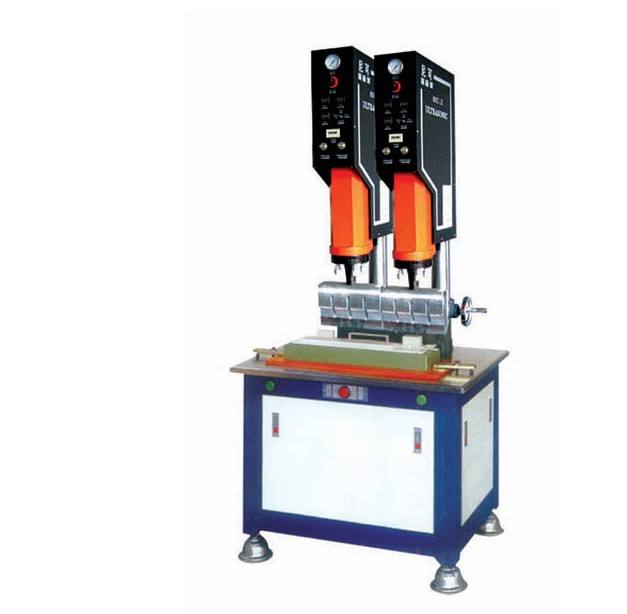- All
- Product Name
- Product Keyword
- Product Model
- Product Summary
- Product Description
- Multi Field Search
Views: 15 Author: Site Editor Publish Time: 2019-06-23 Origin: Site
Ultrasonic plastic welding machine principle
When ultrasonic waves act on the thermoplastic plastic contact surface, high-frequency vibrations of tens of thousands of times per second are generated. This high-frequency vibration reaches a certain amplitude, and the ultrasonic energy is transmitted to the weld zone through the upper weldment, because the weld zone is two The joints at the welded joints have a large acoustic resistance, so local high temperatures are generated. Moreover, due to the poor thermal conductivity of the plastic, it can not be dissipated in time and gather in the weld zone, so that the contact faces of the two plastics melt rapidly, and after a certain pressure, they are integrated into one. When the ultrasonic wave stops, let the pressure last for a few seconds to solidify it, thus forming a strong molecular chain for welding purposes, the welding strength can be close to the strength of the raw material. The quality of ultrasonic plastic welding depends on the amplitude of the transducer welding head, the applied pressure and the welding time. The welding time and the welding head pressure can be adjusted. The amplitude is determined by the transducer and the horn. The interaction of these three quantities has a suitable value. When the energy exceeds the appropriate value, the melting amount of the plastic is large, and the welding material is easily deformed; if the energy is small, the welding is not easy, and the applied pressure cannot be too large. This optimum pressure is the product of the length of the side of the welded portion and the optimum pressure per 1 mm of the edge.

Ultrasonic plastic welding method
1. Welding method: Ultrasonic vibration transmits ultrasonic waves to the weldment along with the welding head. Due to the large acoustic resistance at the two weldments, local high temperature is generated, and the weldment interface is melted. Under a certain pressure, the two weldments achieve an aesthetic, fast and strong welding effect.
2, implant (insert) method: nut or other metal to insert into the plastic workpiece. First, the ultrasonic wave is transmitted to the metal, and after high-speed vibration, the metal object is directly buried in the molded plastic, and the plastic is melted, and the solidified material is buried.
3, riveting method: To join metal and plastic or two plastics with different properties, ultrasonic riveting method can be used to make the welding parts not easy to be brittle, beautiful and strong.
4, spot welding method: the use of a small welding head to two points of large plastic products welded, or a whole row of toothed welding head directly pressed on two plastic parts, in order to achieve the effect of spot welding.
5. Molding method: The plastic workpiece is instantly melted by ultrasonic wave, and the metal or other material plastic can be solidified when the plastic is solidified.
6. Resection method: The special design method of the welding head and the base is used. When the plastic workpiece is just shot out, it is directly pressed on the branches of the plastic, and the effect of the resection is achieved by ultrasonic conduction.
Ms. Yvonne
sales@xingultrasonic.com
0086-15658151051
Room 1103B, Nature business building , NO.1160 GongWang Road ,FuYang, Hangzhou,Zhejiang,China